Chevy Blazer EV Luggage Test: How much fits in the trunk?

After a rocky start in life, the Chevy Blazer EV has gotten itself back off the matt and out of dealerships again. I’m happy for it, too, since everything I’ve experienced has shown it to be a very well-executed and well-rounded electric vehicle and family SUV. I’m obviously here to talk about cargo capacity, though, so let’s see how the Blazer EV stacks up to its EV competitors as well as some similarly sized gas-powered SUVs.
Chevrolet lists the Blazer EV as having 25.5 cubic-feet of cargo space behind its back seat without a sunroof. With a sunroof, it goes up to 25.8. That’s officially the first time I’ve seen a sunroof add to cargo capacity. Both figures would be less than I guestimated on the Blazer EV first drive launch. It’s also on the low end for the segment: Hyundai Ioniq 5 (27.2), Kia EV6 (24.4), Ford Mustang Mach-E (29.7), VW ID.4 (30.3) and Tesla Model Y (30.2). You can find the luggage tests of each of those competitors (minus the Tesla) by following the links above. It’s actually closer to the Kia Niro Electric (22.8) than some of those other competitors. All of the above represent less space than you’ll find in class-leading compact SUVs, whereas many of the above including the Blazer are considered midsizers.
But I do these tests because such figures aren’t that reliable, so let’s get to it.
It’s a nice, deep space, but you can see the roofline tapers aggressively. That’s normal for this segment, though.
It’s also normal for there to be extra space lurking under the floor, so let’s check that out.
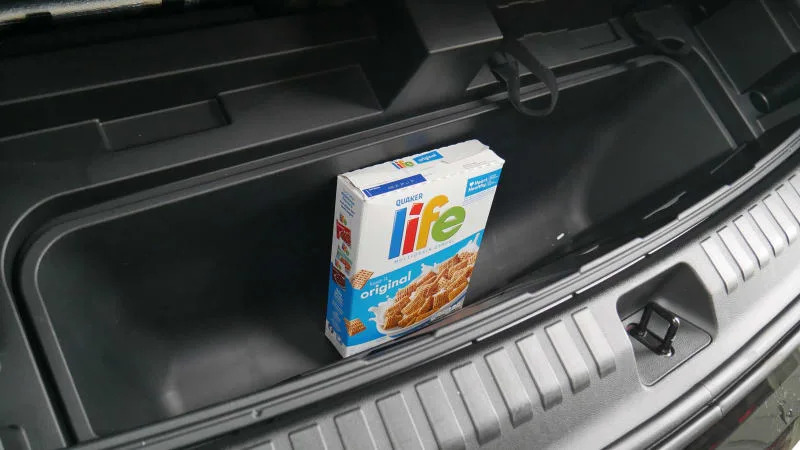
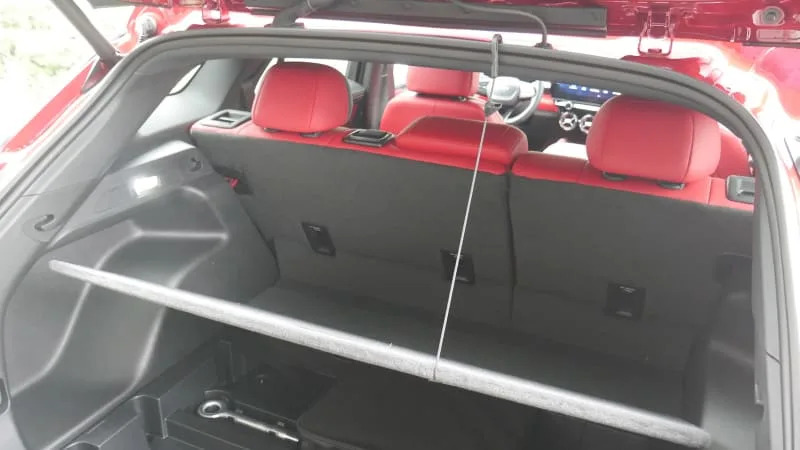
There is indeed underfloor space, but it’s not big enough for any of my bags. The standard-size box of Life cereal was used to give you an idea of its dimensions. The Cadillac Lyriq has a similar bin, but it could hold a small duffel bag (still smaller than fancy bag). It’s test is coming in a few weeks.
One feature that’s always appreciated is the floor prop-up string and hook (above right).
Now, this car did not come with a cargo cover, which seems to be of the roll-out cartridge variety, so I can’t test with and without it.
As with every Luggage Test, I use two midsize roller suitcases that would need to be checked in at the airport (26 inches long, 16 wide, 11 deep), two black roll-aboard suitcases that just barely fit in the overhead (24L x 15W x 10D), and one smaller green roll-aboard that fits easily (23L x 15W x 10D). I also include my wife’s fancy overnight bag just to spruce things up a bit (21L x 12W x 12D).
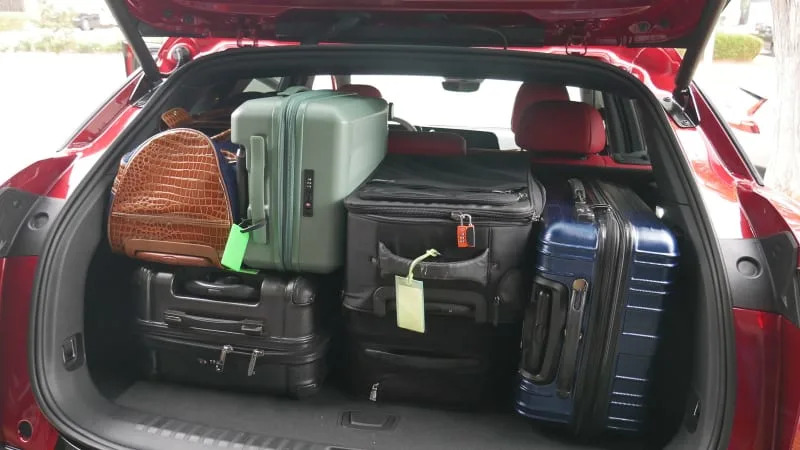
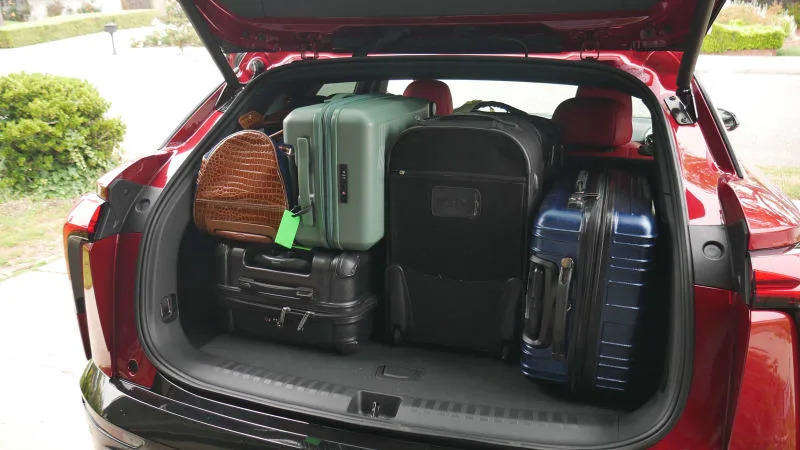
Here’s two Tetris options, both of which result in all the bags fitting. You could probably fit a small something on top of the blue bag on right, but that’s all she wrote. This amount is in fact better than I could manage in the Hyundai Ioniq 5 (its roofline/liftgate shape really hampers it), but basically the same as the Kia Niro Electric and worse than the other competitors listed above. Again, except the Model Y that I haven’t tested. The ID.4 is probably the only one that’s considerably better, with the EV6 just a bit behind that.
This amount is also indeed less than what you’d get in a Honda CR-V and Kia Sportage hybrids of the world.
One more note …
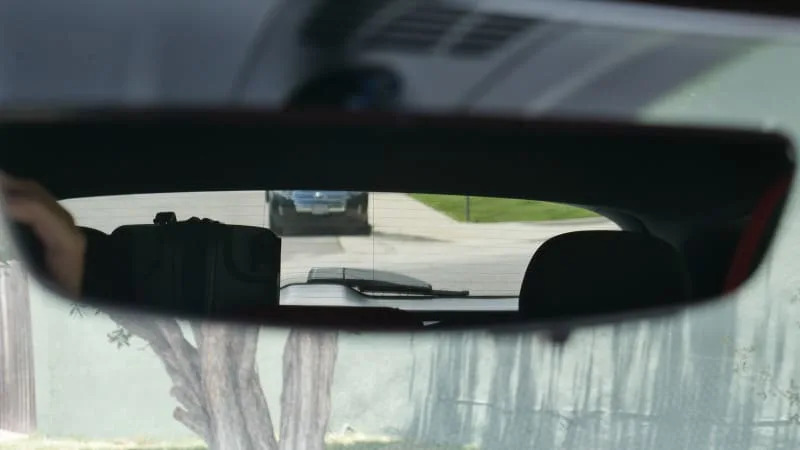

This Blazer EV RS had the Convenience and Driver Confidence package that includes a digital rearview camera. That means I could in theory load to the roof and not hamper visibility, but again, only with this optional package selected. I would also still be dealing with the issue of items potentially flying forward, which is why I didn’t attempt to do so. Not that I needed to, because again, all the bags fit. Good feature to have either way, even if I personally hate using camera-based mirrors unless I have to.



